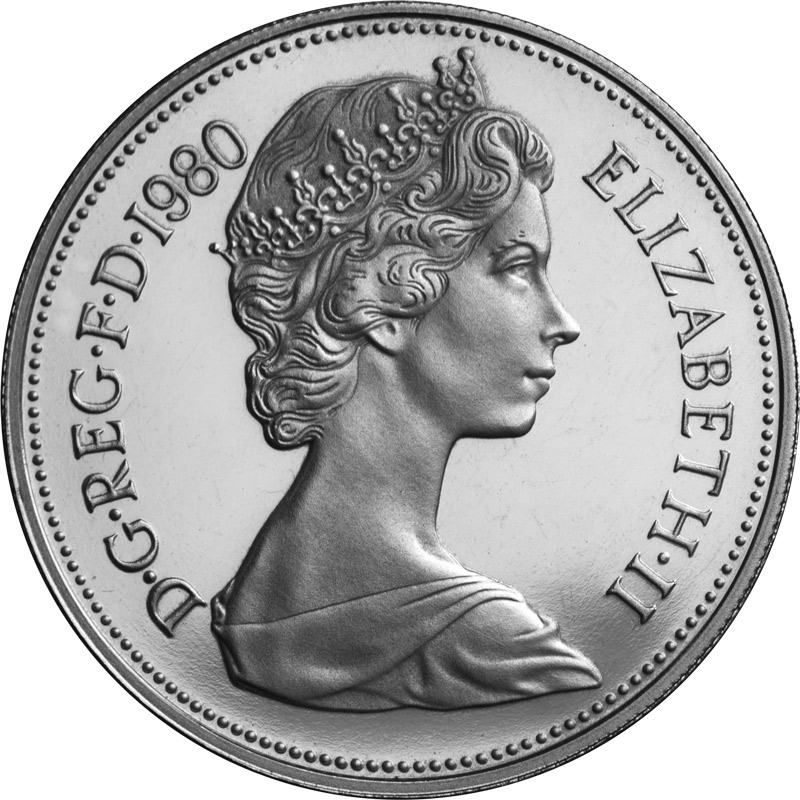Posts Tagged ‘New Portrait’
Why did The Royal Mint revert to the Queen’s decimal first effigy?
2021 marks 50 years since our UK coins turned decimal, in the biggest numismatic change seen in centuries.
In celebration of this significant anniversary, The Royal Mint issued not one, but TWO Decimal Day 50ps in 2021. The reverse designs are the same, but that certainly can’t be said for their obverses…
The first version of the Decimal Day 50p, available exclusively in the 2021 Annual Coin Set, features the original Arnold Machin portrait of Her Majesty The Queen on the obverse – the same obverse used for the UK’s very first decimal coins.
However, the individual coin which was released later in January, featured Jody Clark’s fifth portrait of The Queen instead.
So why did The Royal Mint revert back to the Queen’s first decimal effigy for this new issue? Join Change Checker as we take a closer look…

Spot the Difference


The 50p available in the Annual Set which features the original Machin portrait on the obverse, quickly caught the eyes of collectors as this was the first time we have seen The Royal Mint revert a previous portrait of HM Queen Elizabeth II on a base metal UK coin.
Marking 50 years since our UK coins went decimal, it seemed only fitting that this coin should include Machin’s obverse design.
But, when the Decimal Day 50p was individually released later in January, collectors had the opportunity to get their hands on a second version of this coin, as Jody Clark’s portrait of The Queen featured on the obverse.
So with two versions of the 2021 UK Decimal Day 50p out there, this coin is set to become a real talking point among collectors!
Arnold Machin Portrait
The significance of this anniversary and the fact that the Machin portrait of HM QEII was the first to be used on the UK’s 50p, makes for the perfect excuse to revert back to this previous effigy on the exclusive Decimal Day 50p within the Annual Set.
The UK’s very first decimal coins (5p, 10p, followed by 50p) actually entered circulation before 1971 and as they were circulating together with pre-decimal currency, a new portrait of The Queen was commissioned to help the new coins stand out.
Arnold Machin’s new portrait showed The Queen wearing a tiara given to The Queen by her grandmother, Queen Mary.
We love the fact that collectors have the chance to see this previous portrait reused on this brand new 50p and it certainly makes for interesting collecting!
Have you secure both versions of the 2021 Decimal Day for your collections? Let us know in the comments below!
But that’s not all, as this is not the first time we’ve seen different obverses used on the same coin…
2015 Battle of Britain 50p
In 2015, The Battle of Britain 50p shot to fame as collectors were quick to spot that there were THREE different versions of the coin, with different obverses on each of them.




The Brilliant Uncirculated 50p was issued early in 2015 and was quickly dubbed an ‘error’ coin. The coins, which were sold in presentation packs, had been struck without the denomination in either numbers or writing anywhere on the coin. Chancers were quick to play to this, with some managing to sell on the coins for near to £100 each on the secondary market.
After the controversy surrounding the coin erupted, the Royal Mint confirmed that the 50p intended for circulation later on in the year would have the ’50 PENCE’ denomination. But was this after they had realised their mistake?
So how did this coin end up with three different obverses?
Each version of this coin has caused a stir in the collecting world. Not only does this Battle of Britain 50p fail to feature a denomination on the Brilliant Uncirculated version, but the obverse is different for each finish used for the coin – a first for a UK commemorative coin.
In 2019, a brand new re-issued Brilliant Uncirculated version of the Battle of Britain 50p (from the 2019 50th Anniversary of the 50p Military Set) saw Jody Clark’s portrait and the 50 PENCE denomination – making this the FOURTH version of this 50p!
Do you have any of the Battle of Britain 50p coins? Let us know in the comments below!
Secure the 2021 Annual Set with the Decimal Day 50p that features the original Arnold Machin obverse!

Own ALL FIVE brand new 2021 coins in superior collector quality for JUST £40.00 (+p&p).
Each coin has been struck to a superior Brilliant Uncirculated quality and protectively encapsulated in official Change Checker packaging, within in a Change Checker Display Page – perfect to slot into your Change Checker Album.
Order today to own the 2021 Commemorative coin Set in superior Brilliant Uncirculated quality by clicking here >>
Historic Heads – the changing faces of UK coins
The ‘heads’, or obverse, side of a coin has depicted the image of a monarch or ruler for thousands of years.
However, the nature of these images have changed over the centuries. From the Ancient Greeks to Queen Elizabeth II, in this blog we guide you through the differing historic heads of uk coinage.

Ancient Greece and Rome

The coins of ancient Greece set the design template for the circulating coins that we use today in the UK!
On one side, their coins show a portrait of the symbol of national sovereignty and on the other side, we see something that resembles the nation.
Coins of ancient Greece and Rome were provided for city states and depict images of iconic leaders and the gods that protected them.
Roman coins depict the faces of the leaders of the empire, including Emperor Honoria.
Anglo-Saxon and Medieval Period

The Anglo–Saxon period in Britain spans approximately the six centuries from 410-1066AD.
In the ninth century The Royal Mint struck a silver penny of Alfred the Great at the time of the resettlement of London after its first occupation by the Vikings.
The coin would have been struck by hand and the design showcases the rigid markings that would have come as a result of hand tools.
The Renaissance and the Tudors

The Sovereign is undoubtedly one of the most impressive coins struck by The Royal Mint.
In 1489, Henry VII ordered a new coin of gold. The coin surface was large, enabling the engraver to include decorative details. It allowed for more detailed portraits of monarchs.
The portrait on this coin is of the crowned King Henry VIII.
Charles II

When Charles II was restored to the throne, he needed to assert his royal authority and to show a clear break from the rule of Oliver Cromwell.
It’s been suggested that the tradition of monarchs facing in the opposite direction to their predecessor on coins, dates back to Charles II when he wanted coins under his reign to be different from that of Cromwell.
Victoria

Despite reigning for 64 years, there were few coinage portraits of Queen Victoria, with one being favoured for 50 years.
For 50 years the ‘Young Head’ effigy of Queen Victoria featured on UK coinage this classically styled portrait was reinterpreted several times, with each effigy designed to portray the queen as she aged.
Queen Elizabeth II

Five portraits of Her Majesty The Queen have been used on UK coins since her accession to the throne in 1952.
The Queen’s first portrait, by Mary Gillick, shows her wearing a wreath in the style of many British coins struck between the seventeenth and early nineteenth centuries. This portrait remained on UK coins up until decimalisation, when Arnold Machin’s new portrait of The Queen was used (pictured above).
The effigy selected for use from 1985 was prepared by the sculptor Raphael Maklouf, in which she is depicted wearing a necklace and earrings.
By her fourth portrait, designed by Ian Rank-Broadley, a greater degree of realism was used. It shows The Queen in her sixth decade, her crowned head filling the coin’s surface.
The fifth and most recent portrait of The Queen is by Royal Mint designer Jody Clark. This is arguably the first UK coin to introduce elements of personality with a hint of a smile. Clark is the first Royal Mint employee in over 100 years to design a UK definitive coin portrait.
So now you know how the portraits on our coins have changed over the years, which portrait is your favourite? Comment below!
Secure the History of Britain in Coins Collector’s Album to your collection!
The ‘History of Britain in Coins’ Collector’s Album is an exciting way to collect ten specially selected UK 50p and £2 coins that Change Checker consider as some of the most historically interesting circulating coins of the decimal era!
Click here to secure your History of Britain in Coins Collector’s Album for just £25.00 (+p&p) >>
Which Queen Elizabeth II portrait is your favourite?
Jody Clark recently added his name to an illustrious list in the history books by becoming only the fifth person to create an effigy of Queen Elizabeth II for British circulating coins. Each artist has given their own portrayal of the Queen which offers us a numismatic timeline showing her changing profile over the years.
But which of the five is your favourite? Place your vote below.
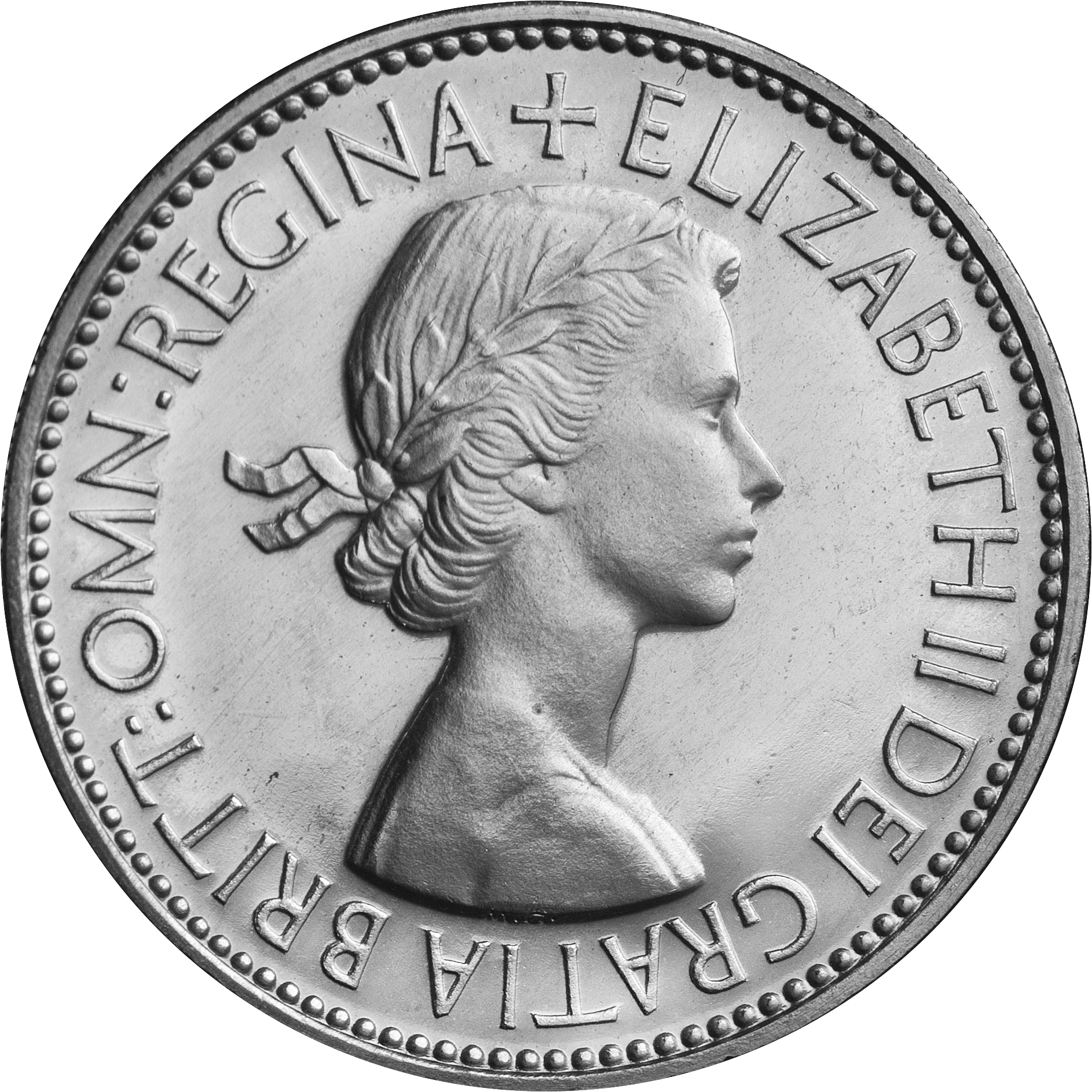 1. Mary Gillick (1953 – 1970)
1. Mary Gillick (1953 – 1970)
The very first coins of Queen Elizabeth II’s reign bore Mary Gillick’s portrait of a youthful looking Queen, which she engraved especially for the new coins. Her uncrowned portrait is still used on Maundy Money distributed each year by Her Majesty.
2. Arnold Machin RA (1968 – 1984)
With decimalisation approaching, the Queen’s portrait was refreshed with Arnold Machin’s new sculpture. Commissioned in 1964, it first appeared in 1968 on the new 5p and 10p coins. A version of the design with a tiara was introduced on stamps in 1967 and remains to this day.
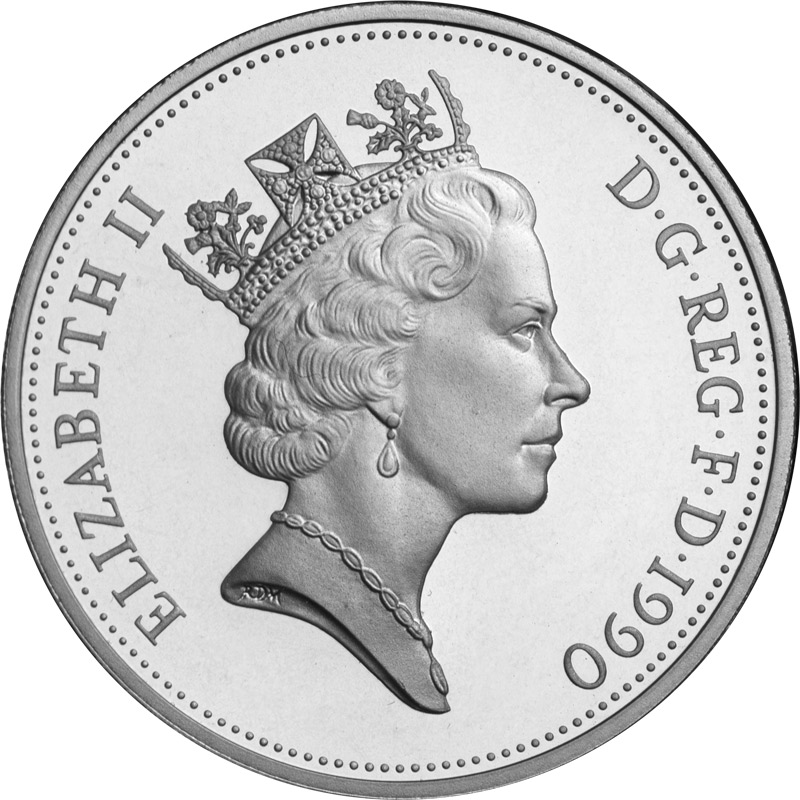
3. Raphael Maklouf (1985 – 1997)
With his portrayal of Her Majesty, Raphael Maklouf aimed to “create a symbol, regal and ageless”. Unlike the others, his original formal portrait depicting Queen Elizabeth II wearing the Royal Diadem was ‘couped’ (cut off above the shoulders) to become the third official effigy.
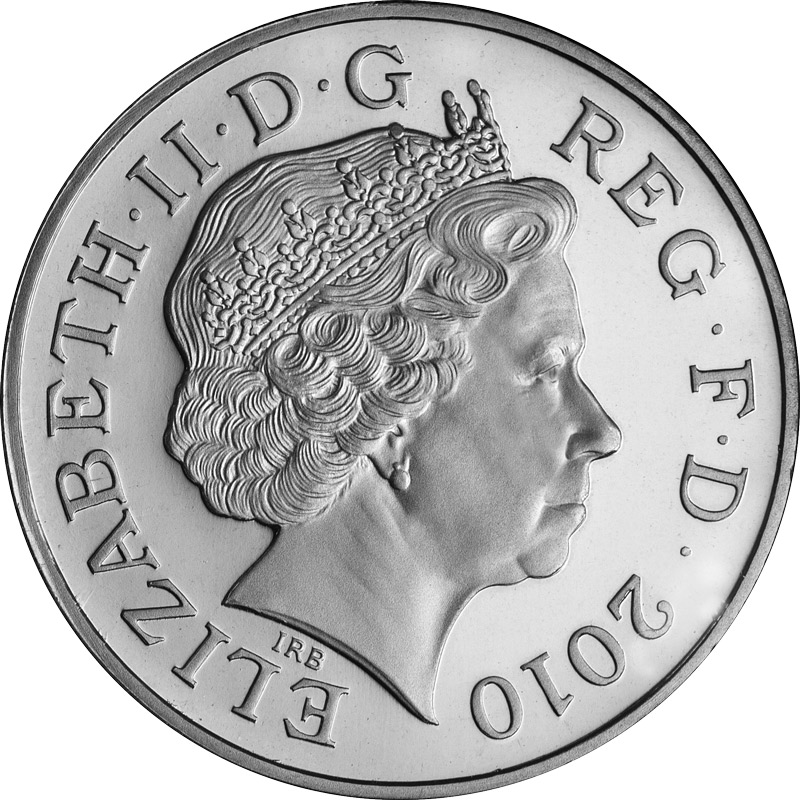
4. Ian Rank-Broadley FRBS (1998 – 2015)
The next portrait was created to fill the full circle of the coin in a deliberate response to the new smaller 5p and 10p coins in circulation. The designer, Ian Rank-Broadley FRBS, aimed to show the Queen with “poise and bearing” with his noticeably more mature portrayal.
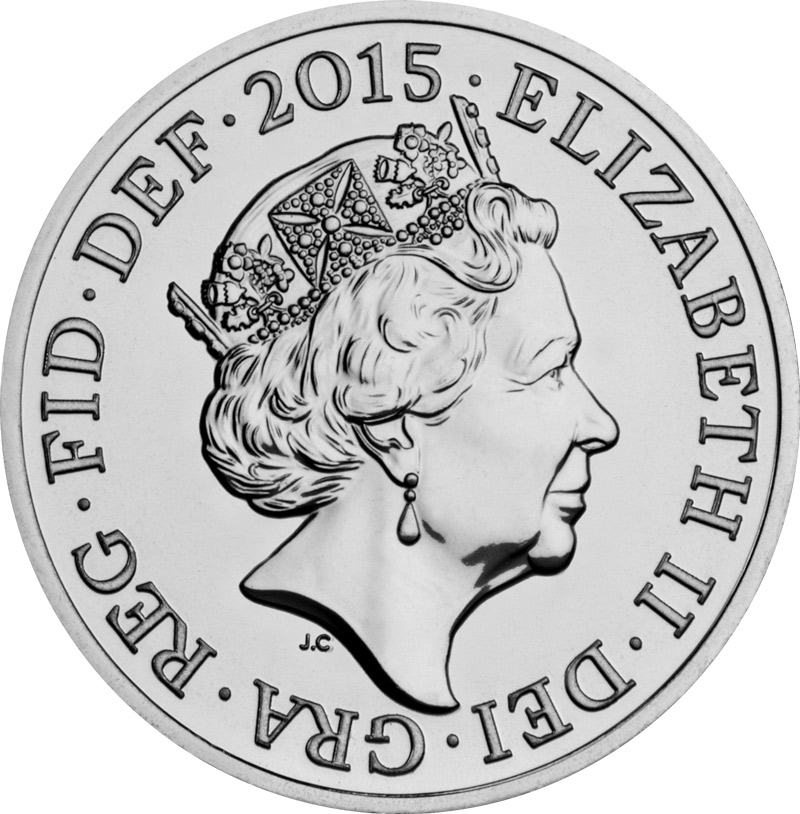
5. Jody Clark (2015 – )
The latest portrait by Jody Clark was unveiled on 2nd March 2015 during a ceremony at the National Portrait Gallery. His elegant depiction of Queen Elizabeth II was selected by the Royal Mint Advisory Committee – and he is the first Royal Mint engraver for over 100 years to be commissioned for a royal coinage portrait.
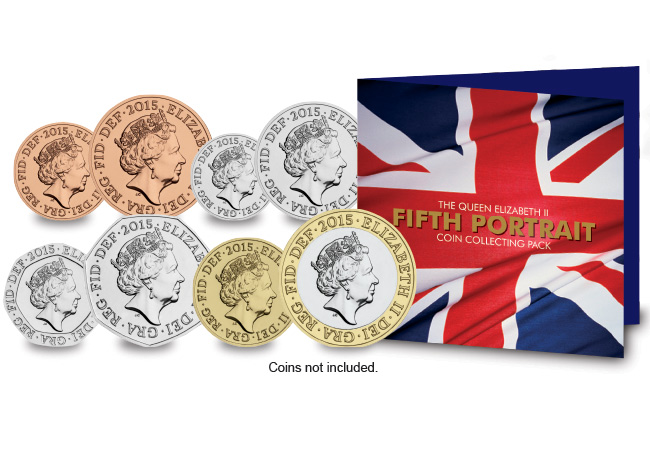 Collect all 8 new portrait coins
Collect all 8 new portrait coins
Be ready to collect all the new portrait coins straight from your change with Change Checker’s New Portrait Coin Collecting Pack.
Click here to reserve yours


